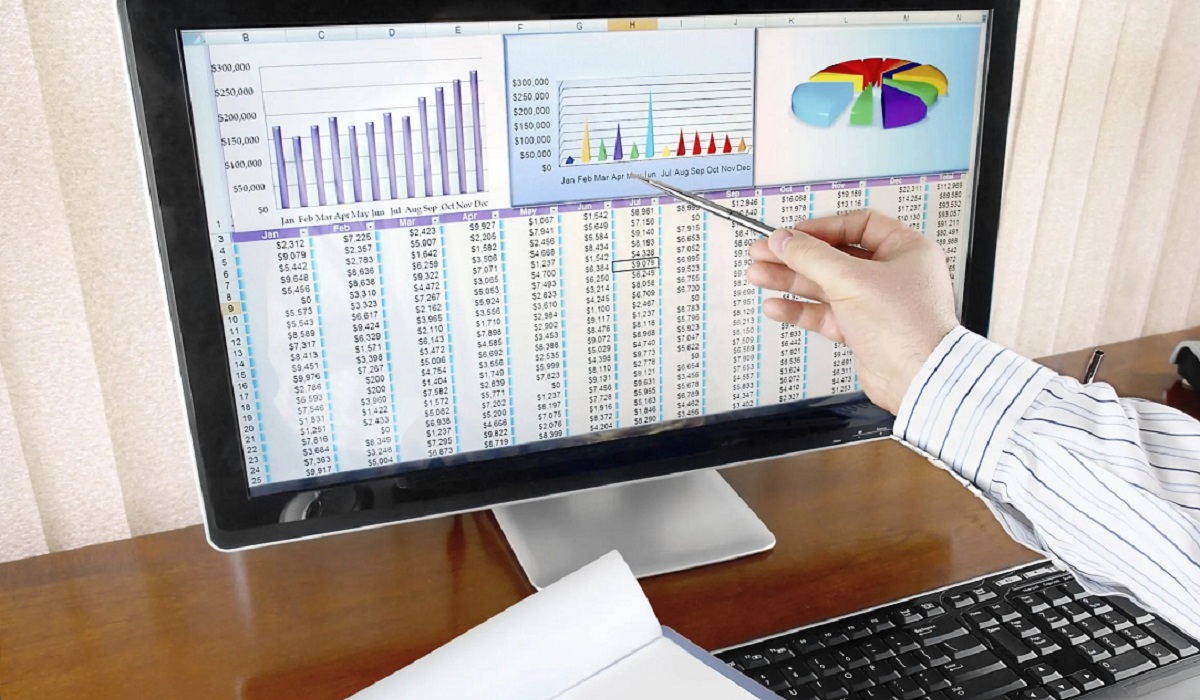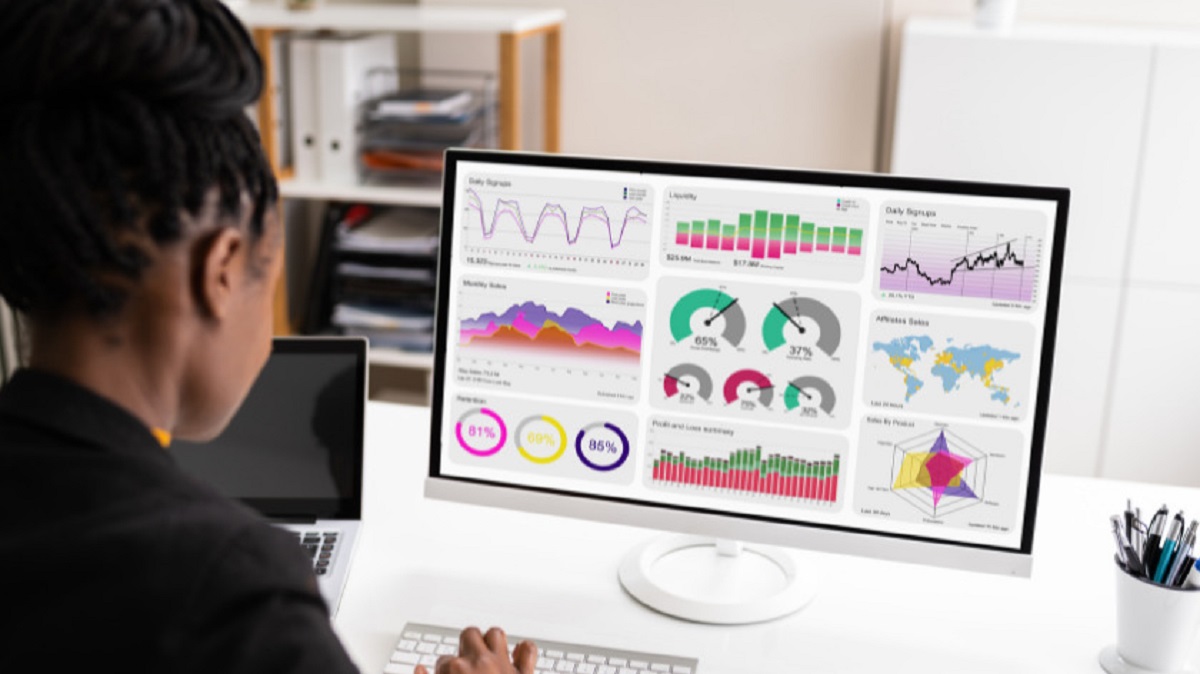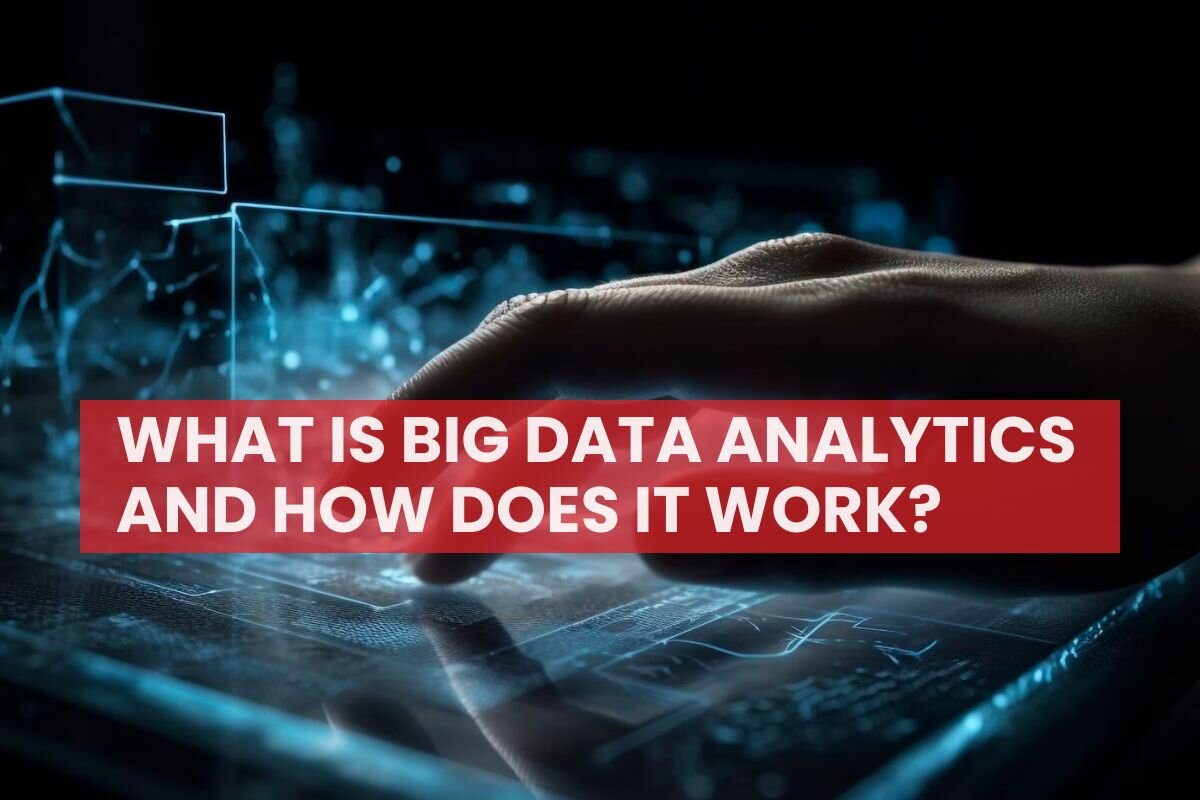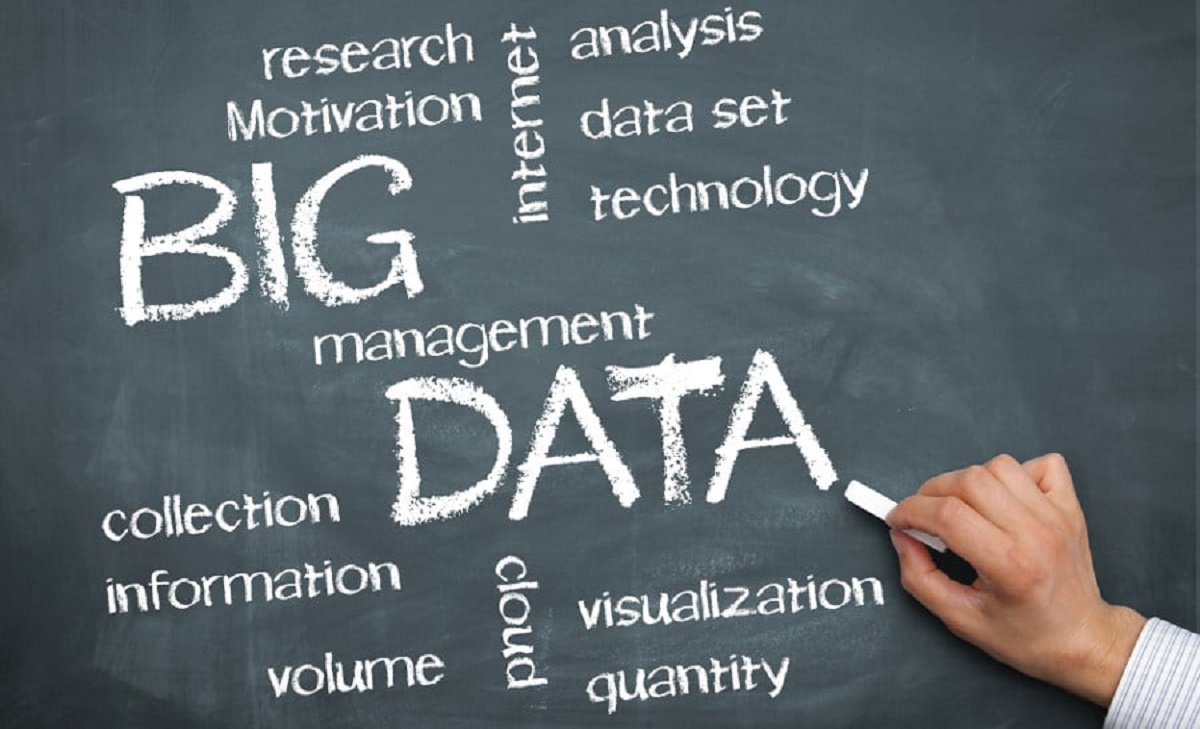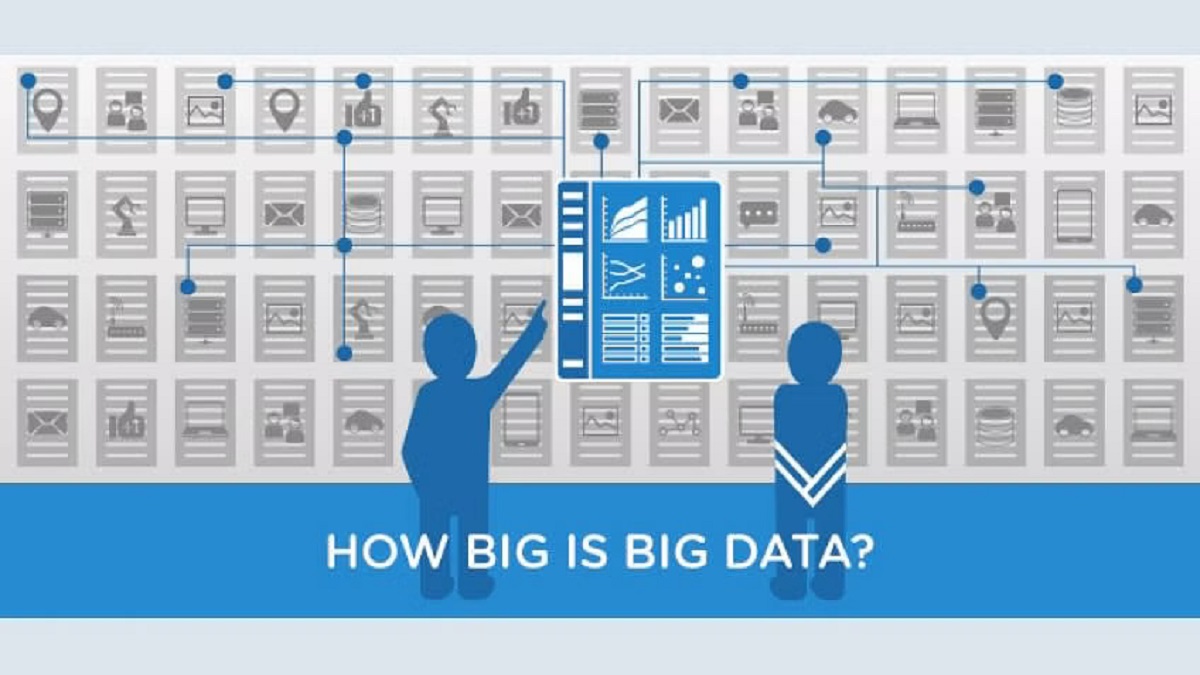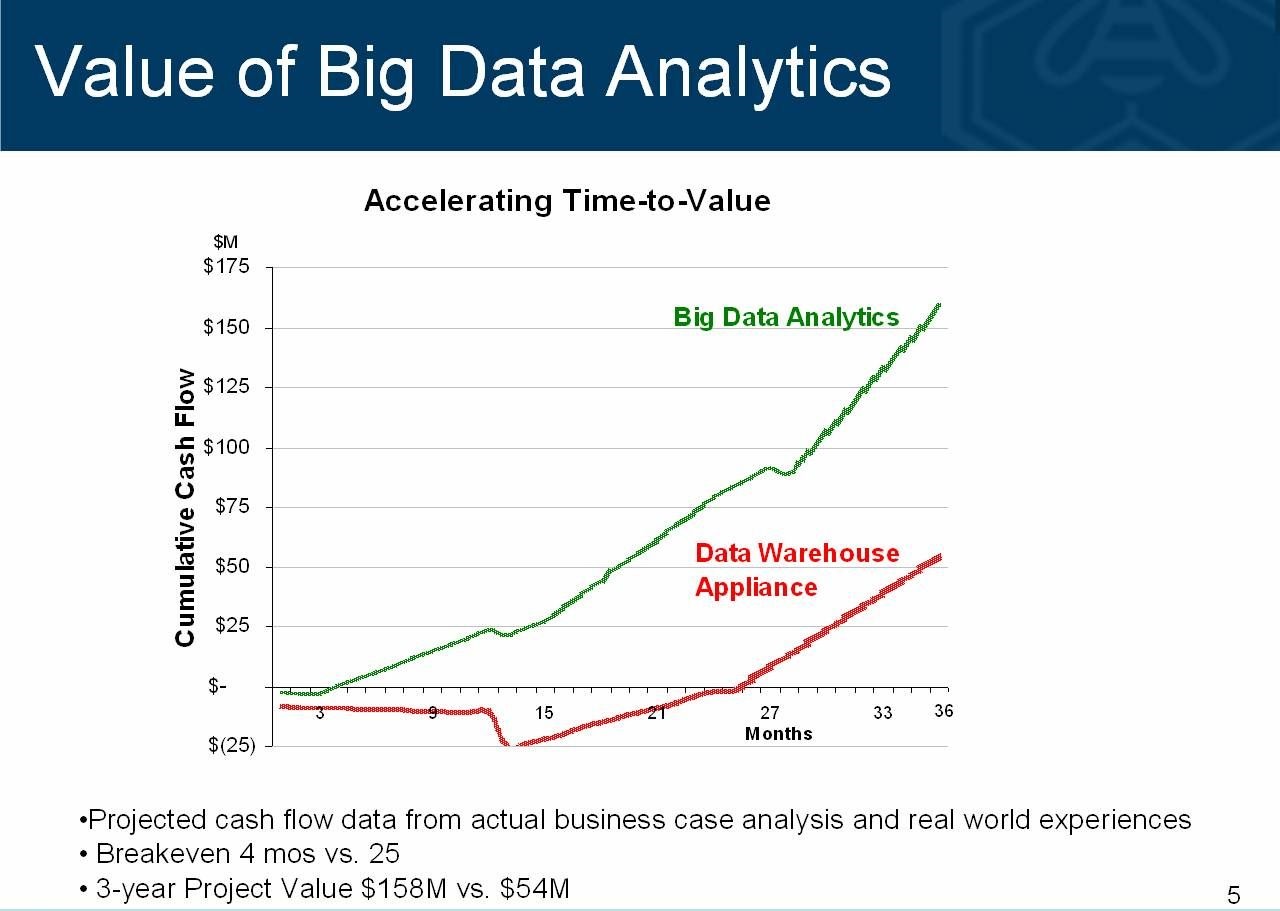Introduction
Big data has become an integral part of our modern society, encompassing vast amounts of information that can be analyzed and utilized to gain valuable insights. With the advent of advanced technologies and tools, businesses and organizations can now harness the power of big data to drive strategic decision-making, improve operations, and enhance customer satisfaction. Big data analytics involves the examination of large and complex datasets to extract meaningful patterns, trends, and correlations. By effectively leveraging this information, businesses can gain a competitive edge and unlock limitless opportunities.
The analysis of big data offers a plethora of benefits across various industries and sectors. From understanding customer behavior to optimizing marketing strategies and improving operational efficiency, the applications of big data are extensive and impactful. Furthermore, it has the potential to revolutionize industries such as healthcare, transportation, and environmental analysis. In this article, we will delve into the ways in which processing big data can provide valuable information and drive growth in different areas.
As we explore the various applications of big data analytics, it is important to note that the possibilities are virtually endless. The ability to collect, store, and process massive amounts of data has opened up new frontiers for innovation and insights. By harnessing the power of big data, businesses can have a deeper understanding of their customers, streamline operations, and make data-driven decisions that lead to success.
Understanding Customer Behavior
One of the key advantages of processing big data is the ability to gain a deeper understanding of customer behavior. With the growing digitization of consumer interactions, businesses have access to vast amounts of data that can be analyzed to uncover valuable insights.
By analyzing customer data, businesses can gain insights into their preferences, purchase patterns, and sentiments. This information is invaluable for tailoring products and services to meet customer needs and preferences. With the help of big data analytics, businesses can segment their customer base, identify target demographics, and personalize marketing strategies to drive customer engagement and loyalty.
Moreover, big data analysis can also help businesses identify potential customer churn. By analyzing customer behavior patterns and detecting warning signs, businesses can proactively implement retention strategies and foster long-term customer relationships.
Another crucial aspect of understanding customer behavior is sentiment analysis. By analyzing data from social media platforms, customer reviews, and online communities, businesses can gauge customer sentiment towards their brand and products. This insight is valuable for reputation management and addressing customer concerns in a timely manner.
Furthermore, processing big data can provide businesses with real-time insights into customer preferences and trends. By analyzing data from various sources such as website traffic, search queries, and social media interactions, businesses can identify emerging trends and adjust their strategies accordingly. This proactive approach helps businesses stay ahead of the competition and meet evolving customer demands.
Overall, understanding customer behavior through big data analysis enables businesses to make data-driven decisions and develop targeted strategies. By truly understanding their customers, businesses can create personalized experiences, enhance customer satisfaction, and ultimately drive business growth.
Improving Business Operations
The analysis of big data plays a vital role in improving business operations. By harnessing the power of data analytics, businesses can identify inefficiencies, streamline processes, and enhance overall operational efficiency.
One area where big data analytics can make a significant impact is supply chain management. By analyzing data related to suppliers, inventory levels, transportation routes, and demand patterns, businesses can optimize their supply chain processes. This optimization leads to reduced costs, improved delivery times, and better overall inventory management.
Furthermore, big data analytics can help businesses detect and prevent operational bottlenecks. By analyzing data from various sources such as production lines, customer service logs, and transaction records, businesses can identify areas of inefficiency or potential failures. This information allows them to take proactive measures to address issues and minimize disruptions.
Another aspect of improving business operations is workforce optimization. By analyzing data on employee performance, attendance, and training records, businesses can identify areas for improvement and develop targeted training programs. Additionally, big data analytics can help optimize workforce scheduling, leading to improved productivity and cost savings.
Moreover, big data analytics can assist in predictive maintenance. By analyzing data from sensors, equipment logs, and maintenance records, businesses can identify patterns that indicate potential equipment failures. This allows them to schedule maintenance activities proactively, reducing downtime and avoiding costly unplanned repairs.
Data analytics also offers valuable insights into customer service operations. By analyzing customer interactions, call logs, and feedback, businesses can identify common pain points and areas for improvement. This information enables businesses to enhance their customer service strategies and deliver a superior customer experience.
In summary, the use of big data analytics in improving business operations can lead to enhanced efficiency, cost savings, and improved customer satisfaction. By leveraging data insights, businesses can optimize their supply chain, detect operational bottlenecks, optimize workforce management, implement predictive maintenance measures, and enhance overall customer service operations. These improvements ultimately lead to increased productivity, streamlined processes, and improved business performance.
Optimizing Marketing Strategies
The field of marketing has been transformed by the power of big data analytics. By analyzing large volumes of customer data, businesses can gain valuable insights that drive effective marketing strategies and campaigns.
One way that big data analytics can optimize marketing strategies is through improved targeting. By analyzing customer demographics, purchase history, browsing behavior, and interactions with the brand, businesses can create targeted marketing campaigns that resonate with their audience. These insights enable businesses to deliver personalized messages and offers, resulting in higher conversion rates and improved return on investment.
Furthermore, big data analytics can provide real-time insights into campaign performance. By tracking key metrics such as click-through rates, conversion rates, and engagement levels, businesses can make data-driven decisions to optimize their marketing efforts. This agility allows businesses to quickly adjust their strategies, allocate resources effectively, and maximize campaign success.
Another aspect of optimizing marketing strategies is through sentiment analysis. By analyzing social media conversations, customer reviews, and online discussions, businesses can understand how customers perceive their brand and products. This information is invaluable for shaping marketing messages, addressing customer concerns, and building a positive brand image.
In addition, big data analytics can help identify influencers and brand ambassadors. By analyzing social media data and online communities, businesses can identify individuals who have a significant impact on their target audience. Partnering with these influencers can amplify brand awareness and enhance the reach of marketing campaigns.
Moreover, big data analytics can provide insights into marketing attribution and customer journey analysis. By tracking customer touchpoints, businesses can understand the effectiveness of different marketing channels and optimize their resources accordingly. This attribution analysis allows businesses to allocate budget, time, and efforts to the most impactful marketing activities.
By leveraging the power of big data analytics, businesses can optimize their marketing strategies, create targeted campaigns, improve customer engagement, and ultimately drive sales. The ability to analyze large volumes of customer data and gain valuable insights enables businesses to make data-driven decisions and stay ahead in the ever-evolving marketing landscape.
Enhancing Product Development
Big data analytics has revolutionized the field of product development, enabling businesses to create innovative and customer-centric products. By analyzing vast amounts of data, businesses can gain valuable insights into market trends, customer preferences, and emerging needs.
One way that big data enhances product development is through market research and competitive analysis. By analyzing data from various sources such as social media, online forums, and customer feedback, businesses can identify gaps in the market and understand customer needs and expectations. This information guides product development teams in creating products that fulfill these requirements and stand out from the competition.
Furthermore, big data analytics enables businesses to gather insights on user behavior and product usage. By analyzing data from sensors, customer reviews, and usage logs, businesses can identify patterns and trends in how customers interact with their products. This information informs iterative improvements and helps businesses create products that offer a seamless user experience.
In addition, big data analytics can aid in predictive modeling and forecasting. By analyzing historical data on consumer behavior, sales trends, and market dynamics, businesses can develop models that predict future demand and inform product development decisions. This enables businesses to proactively meet customer needs and stay ahead of market trends.
Moreover, big data analytics can contribute to the concept of co-creation, involving customers in the product development process. By collecting and analyzing customer feedback and suggestions, businesses can gain insights into desired features, functionality, and improvements. This customer-centric approach fosters a sense of ownership and loyalty among customers, resulting in products that better align with their needs and preferences.
Additionally, big data analytics can facilitate rapid prototyping and testing. By analyzing data on customer preferences, market trends, and technological advancements, businesses can quickly iterate and refine product prototypes. This agile approach to product development allows businesses to bring innovative products to market faster and with higher success rates.
In summary, big data analytics plays a crucial role in enhancing product development. By leveraging data insights, businesses can conduct market research, analyze user behavior, predict demand, involve customers in the process, and prototype products more effectively. These practices lead to the creation of products that better meet customer needs, generate higher customer satisfaction, and drive business growth.
Identifying Fraudulent Activities
Big data analytics has become a powerful tool in identifying and combating fraudulent activities across various industries. By analyzing large volumes of data, businesses can detect patterns, anomalies, and suspicious activities that indicate fraud.
One way that big data analytics helps in identifying fraudulent activities is through anomaly detection. By analyzing data from multiple sources such as financial transactions, user behavior, and network logs, businesses can identify deviations from normal patterns. These anomalies can signal potential fraudulent activities, allowing businesses to take immediate action and mitigate losses.
Furthermore, big data analytics enables businesses to detect fraudulent patterns by analyzing historical data. By identifying common characteristics and trends exhibited by fraudulent activities, businesses can develop algorithms and models to automatically flag suspicious transactions or behaviors. This proactive approach helps in minimizing financial losses and protecting both businesses and consumers.
In addition, big data analytics can be used for identity verification and fraud prevention. By analyzing data such as biometrics, user profiles, and historical behavior, businesses can authenticate the identity of individuals and detect any inconsistencies or suspicious activities. This helps in preventing identity theft and unauthorized access to sensitive information.
Moreover, big data analytics can aid in fraud detection in the insurance industry. By analyzing data on claims histories, customer profiles, and medical records, businesses can identify patterns and trends that point towards fraudulent claims. This allows insurers to investigate further and take necessary actions to prevent fraudulent activities.
Furthermore, big data analytics can assist in detecting fraudulent activities in online transactions and e-commerce. By analyzing data such as customer reviews, purchase patterns, and browsing behavior, businesses can identify potential fraudulent transactions. This can include activities such as fraudulent credit card usage, account takeovers, or deceptive practices. By leveraging the power of big data analytics, businesses can protect themselves and their customers from financial losses and reputational damage.
In summary, big data analytics is a valuable tool in identifying fraudulent activities. By analyzing large datasets, businesses can detect anomalies, patterns, and trends that indicate potential fraud. This helps businesses in taking proactive measures to prevent and combat fraud, safeguarding their finances, customers, and overall reputation.
Predictive Analytics for Decision Making
Predictive analytics, powered by big data, has revolutionized the decision-making process for businesses. By analyzing historical data, businesses can make accurate predictions about future events, enabling them to make informed decisions and take proactive measures.
One of the key applications of predictive analytics is in sales and revenue forecasting. By analyzing past sales data, market trends, and customer behavior, businesses can project future sales volumes and revenues. This information helps businesses plan their resources, allocate budgets, and make strategic decisions to maximize profitability.
Furthermore, predictive analytics can assist in demand forecasting and inventory management. By analyzing historical data on customer preferences, market fluctuations, and external factors, businesses can predict future demand for their products or services. This allows businesses to optimize their inventory levels, ensure timely availability of products, and avoid costly overstocks or stockouts.
Moreover, predictive analytics can be used for risk assessment and management. By analyzing large amounts of data, businesses can identify potential risks and predict their likelihood of occurrence. This information enables businesses to take proactive measures to mitigate risks and minimize potential losses. This includes areas such as financial risk, supply chain disruptions, or even cybersecurity threats.
In addition, predictive analytics can assist in optimizing marketing campaigns. By analyzing customer data, market trends, and campaign performance metrics, businesses can predict the effectiveness of different marketing strategies and channels. This enables businesses to allocate resources more effectively, target the right audience, and maximize the return on investment for marketing activities.
Furthermore, predictive analytics can be utilized in talent management and workforce planning. By analyzing data on employee performance, skills, and turnover rates, businesses can predict future talent needs and develop strategies to attract, retain, and develop their workforce. This allows businesses to ensure they have the right people in the right roles, leading to improved productivity and organizational success.
Overall, predictive analytics empowers businesses to make data-driven decisions and take proactive measures. By analyzing historical data and leveraging advanced algorithms, businesses can predict future events, identify potential risks, optimize their marketing efforts, and make informed decisions in various aspects of their operations. This ability to foresee and plan for the future enhances business efficiency, minimizes risks, and ultimately drives success.
Healthcare and Medical Research
The healthcare industry has witnessed tremendous advancements in leveraging big data analytics for improved patient care, medical research, and operational efficiency. By analyzing large volumes of healthcare data, businesses and researchers can gain valuable insights to enhance medical outcomes and drive innovation.
One of the key applications of big data analytics in healthcare is in patient care and clinical decision-making. By analyzing electronic health records, medical imaging data, and genomic information, healthcare providers can make more accurate diagnoses, personalize treatment plans, and improve patient outcomes. This data-driven approach enables healthcare professionals to deliver precision medicine and tailored interventions, ensuring the most effective care for each patient.
Furthermore, big data analytics can be used for public health surveillance and disease prevention. By analyzing data from various sources such as social media, wearables, and healthcare databases, researchers and public health officials can identify patterns and trends in disease outbreaks, monitor population health, and implement targeted interventions. This proactive approach helps in mitigating the spread of infectious diseases and reducing the burden on healthcare systems.
In addition, big data analytics plays a crucial role in medical research and drug discovery. By analyzing vast amounts of clinical trial data, genetic information, and scientific literature, researchers can identify potential targets for drug development, detect adverse drug reactions, and accelerate the discovery of new treatments. This enables the development of more effective medications and therapies and enhances the overall progress of medical research.
Moreover, big data analytics can be employed in healthcare operations and resource management. By analyzing data on hospital admissions, patient flow, and resource utilization, healthcare administrators can optimize workflows, reduce wait times, and ensure efficient allocation of resources. This leads to improved operational efficiency, cost savings, and better patient experiences.
Furthermore, big data analytics can facilitate predictive analytics in healthcare. By analyzing vast amounts of patient data, researchers can develop models to predict disease outcomes, identify high-risk patients, and intervene before the onset of complications. This proactive approach helps in improving patient outcomes, reducing hospital readmissions, and managing chronic diseases more effectively.
In summary, big data analytics has immense potential in healthcare and medical research. By leveraging the power of data, healthcare providers and researchers can enhance patient care, drive medical research advancements, improve resource allocation, and promote public health initiatives. The insights gained from big data analytics enable evidence-based decision-making, leading to better healthcare outcomes and a brighter future for the medical field.
Transportation and Traffic Management
The transportation industry can greatly benefit from big data analytics in managing traffic flow, improving operational efficiency, and enhancing overall transportation systems. By analyzing massive volumes of data from various sources, businesses and transportation authorities can make informed decisions to optimize traffic management and improve the overall transportation experience.
One of the key applications of big data analytics in transportation is in traffic management and congestion reduction. By analyzing data from sensors, GPS devices, and traffic cameras, transportation authorities can monitor real-time traffic conditions, identify congestion hotspots, and implement strategies to alleviate traffic congestion. This includes adjusting traffic signal timings, implementing dynamic routing systems, and providing real-time information to drivers to help them make informed decisions.
Furthermore, big data analytics can help in predicting traffic patterns and developments. By analyzing historical traffic data, weather conditions, and events, transportation authorities can forecast future traffic trends and plan accordingly. This proactive approach allows for proactive management of traffic flow, effective allocation of resources, and improved overall transportation efficiency.
In addition, big data analytics can contribute to optimizing public transportation systems. By analyzing data from fare collection systems, passenger counts, and GPS tracking, transportation agencies can identify peak travel times, adjust service frequencies, and identify areas of high demand. This leads to a more efficient public transport system, reduced wait times, and improved passenger satisfaction.
Moreover, big data analytics can aid in route optimization for transportation fleets. By analyzing data on delivery or transportation routes, historical traffic patterns, and vehicle performance, businesses can optimize routes to reduce travel time, fuel consumption, and operational costs. This enables businesses to deliver goods and services more efficiently, improving customer satisfaction and reducing environmental impact.
Furthermore, big data analytics can be utilized for predictive maintenance of transportation assets. By analyzing data from sensors, maintenance logs, and historical performance data, businesses can predict potential equipment failures, schedule maintenance activities proactively, and minimize downtime. This results in improved asset lifespan, reduced maintenance costs, and enhanced overall operational efficiency.
In summary, big data analytics provides invaluable insights for transportation and traffic management. By analyzing vast amounts of data, businesses and transportation authorities can optimize traffic flow, predict traffic patterns, and improve public transportation systems. This data-driven approach leads to reduced congestion, improved operational efficiency, and a more seamless transportation experience for commuters and businesses.
Environmental Analysis
Big data analytics plays a crucial role in environmental analysis, providing insights that help in understanding and addressing environmental challenges. By analyzing large volumes of data related to climate, pollution, and natural resources, businesses, governments, and organizations can make informed decisions to promote sustainability and protect the environment.
One area where big data analytics proves valuable is in climate monitoring and prediction. By analyzing data from weather stations, satellite imagery, and climate models, researchers can track changes in temperature, precipitation, and other climate variables. This information helps in understanding climate patterns, predicting extreme weather events, and developing strategies for climate change adaptation and mitigation.
Furthermore, big data analytics can aid in pollution monitoring and control. By analyzing data from air quality sensors, satellite imagery, and industrial emissions data, environmental agencies can identify sources of pollution, measure pollutant levels, and implement targeted measures to reduce pollution. This proactive approach helps in improving air quality, protecting ecosystems, and safeguarding public health.
In addition, big data analytics can contribute to natural resource management. By analyzing data on water resources, biodiversity, and land use, conservation organizations and governments can monitor and protect natural ecosystems. This includes identifying areas at risk, developing conservation plans, and mitigating the negative impacts of human activities on the environment.
Moreover, big data analytics enables businesses and organizations to assess their ecological footprint. By analyzing data related to energy consumption, waste generation, and carbon emissions, businesses can identify opportunities to reduce their environmental impact. This includes implementing energy-efficient measures, adopting sustainable practices, and minimizing waste generation.
Furthermore, big data analytics can assist in environmental impact assessments for development projects. By analyzing data on land use, species habitats, and ecosystem services, businesses and governments can identify potential environmental impacts and develop strategies to minimize negative consequences. This ensures that development projects are conducted in a sustainable and responsible manner.
In summary, big data analytics plays a critical role in environmental analysis and sustainability. By analyzing and interpreting vast amounts of data, stakeholders can track climate patterns, monitor pollution levels, manage natural resources, assess ecological impact, and make informed decisions for a more sustainable future. The insights gained from big data analytics enable effective environmental management and contribute to the preservation of our planet’s ecosystems and resources.
Conclusion
Big data analytics has transformed various industries, revolutionizing the way businesses operate, make decisions, and interact with their customers. The breadth and depth of insights available from analyzing large volumes of data have opened up new frontiers of innovation and opportunities for growth.
In this article, we explored some of the key areas where big data analytics is making a significant impact. We discussed how businesses can gain a deeper understanding of customer behavior, enabling them to tailor products, personalize marketing strategies, and enhance customer satisfaction.
We also examined how big data analytics improves business operations by optimizing supply chain management, detecting operational bottlenecks, and improving workforce management and scheduling. These improvements lead to increased efficiency and cost savings.
Furthermore, we explored how big data analytics optimizes marketing strategies by targeting specific demographics, tracking campaign performance, and identifying influencers. This leads to more effective marketing campaigns and higher conversion rates.
Big data analytics also has a profound effect on product development, allowing businesses to create more innovative and customer-centric products. By analyzing data on market trends, customer preferences, and user behavior, businesses can better anticipate and meet customer needs.
In addition, big data analytics enables the identification of fraudulent activities across industries, safeguarding businesses and consumers from financial losses. By analyzing data patterns and anomalies, businesses can detect potential fraud and take immediate action to mitigate risks.
We also explored how big data analytics enhances decision-making through predictive analytics across various sectors. By analyzing past data and trends, businesses can make data-driven decisions, optimize resources, and plan for the future with greater accuracy.
Moreover, big data analytics has made significant contributions to healthcare and medical research, transportation and traffic management, and environmental analysis. These applications have improved patient care, optimized transport systems, and promoted sustainable practices.
In conclusion, big data analytics is a game-changer in today’s digitized world. By harnessing the power of data, businesses and organizations can make informed decisions, drive innovation, and stay ahead of the competition. The applications of big data analytics are vast and continue to evolve, shaping industries and transforming the way we live and work.










